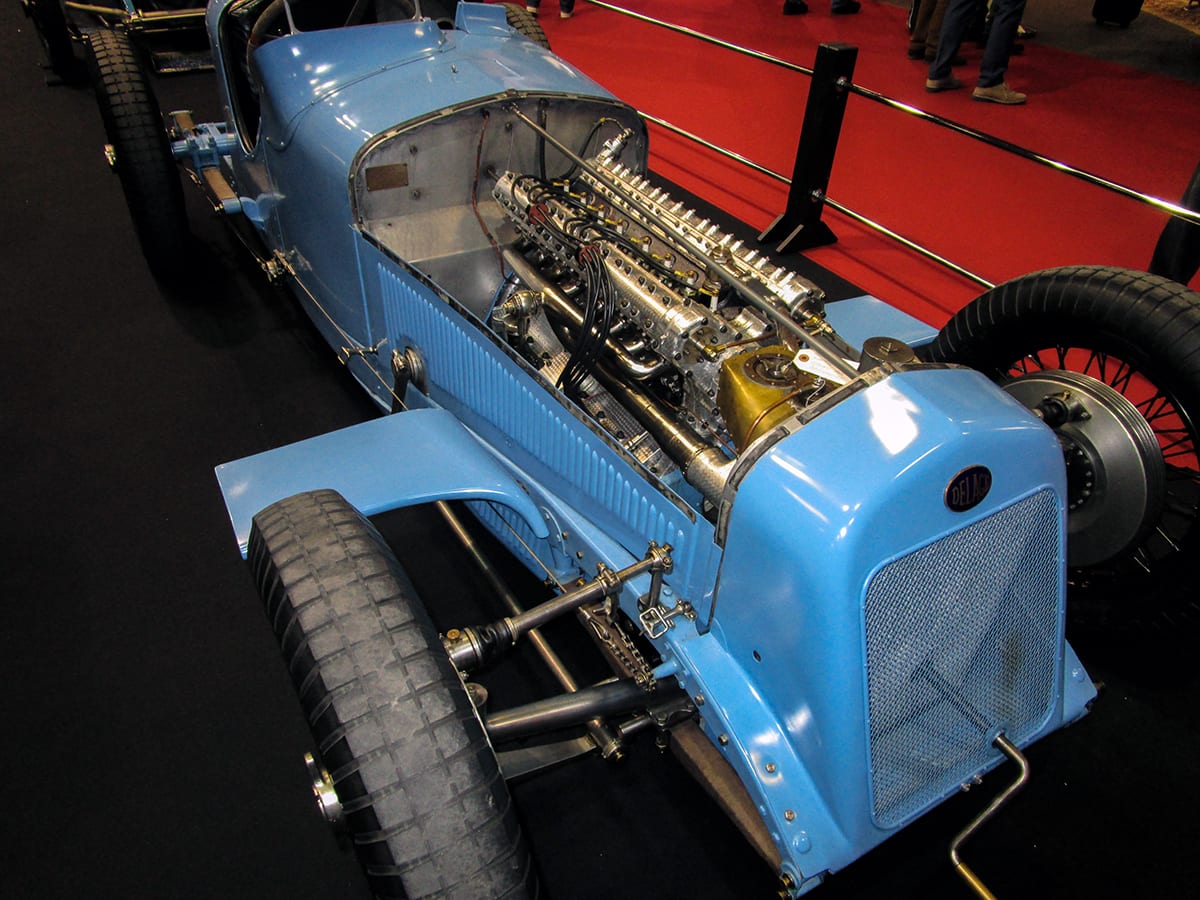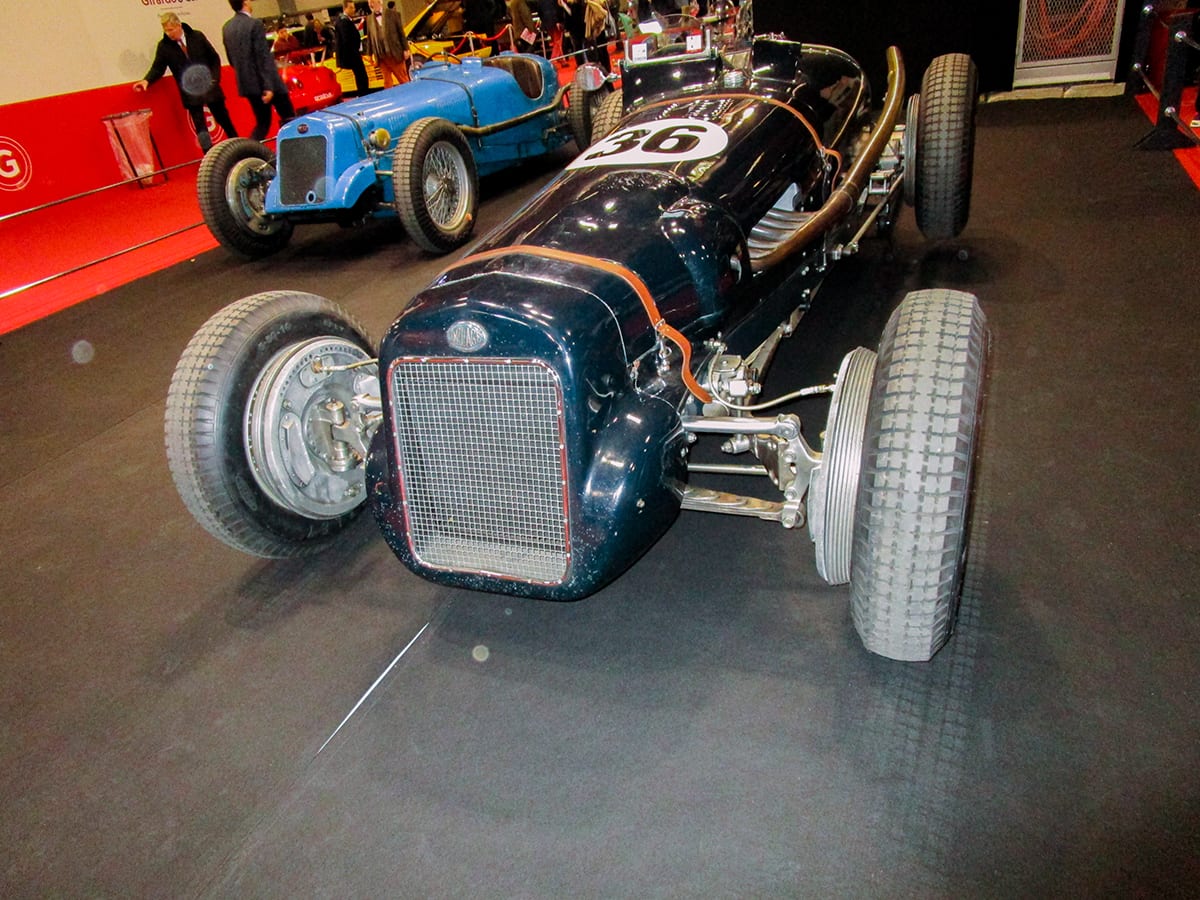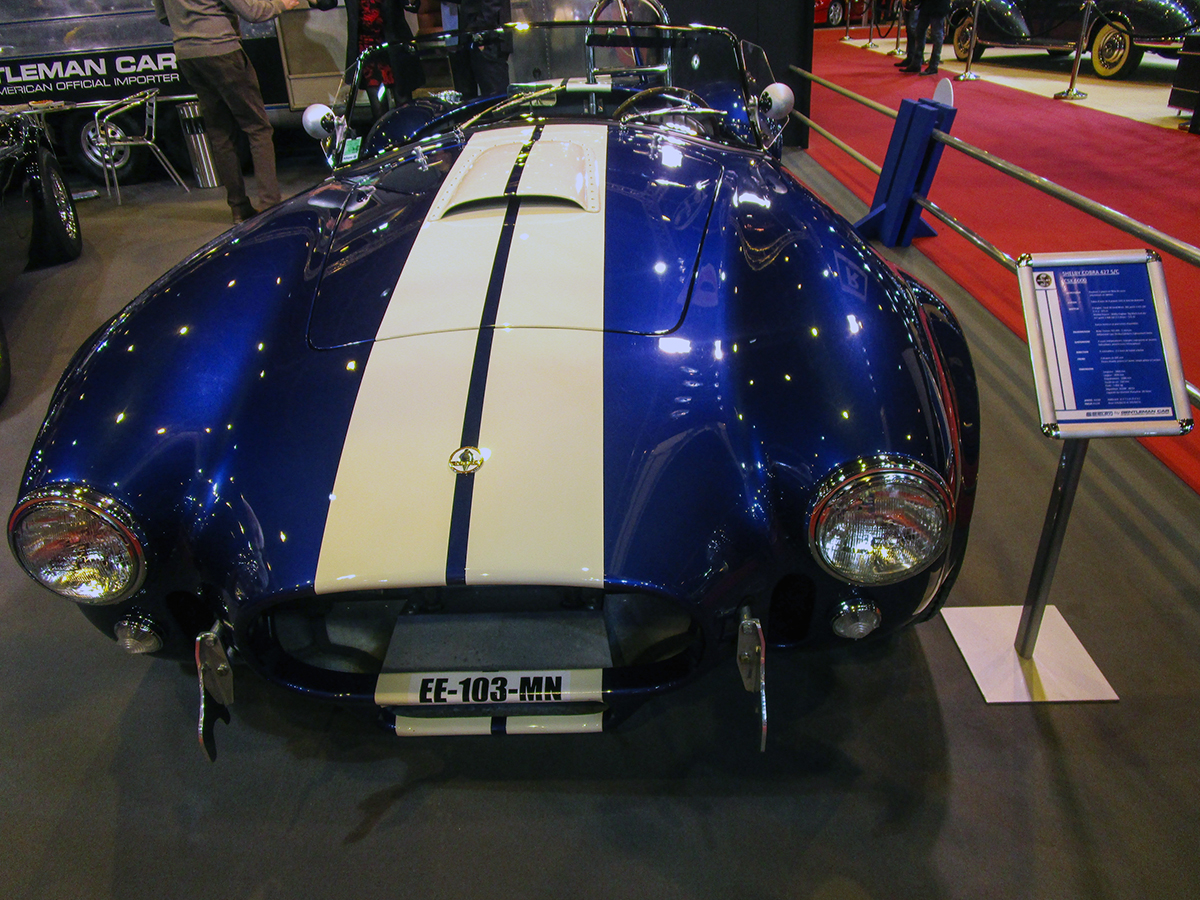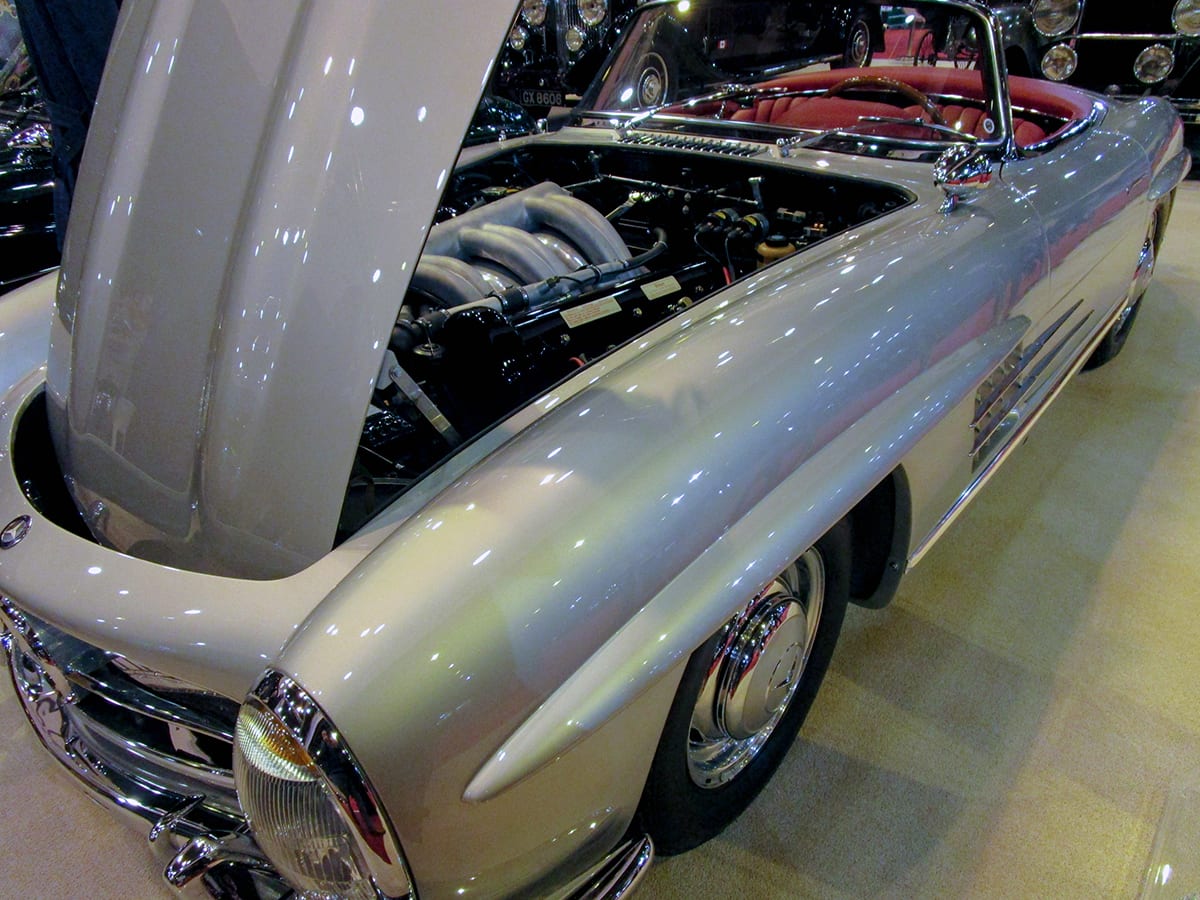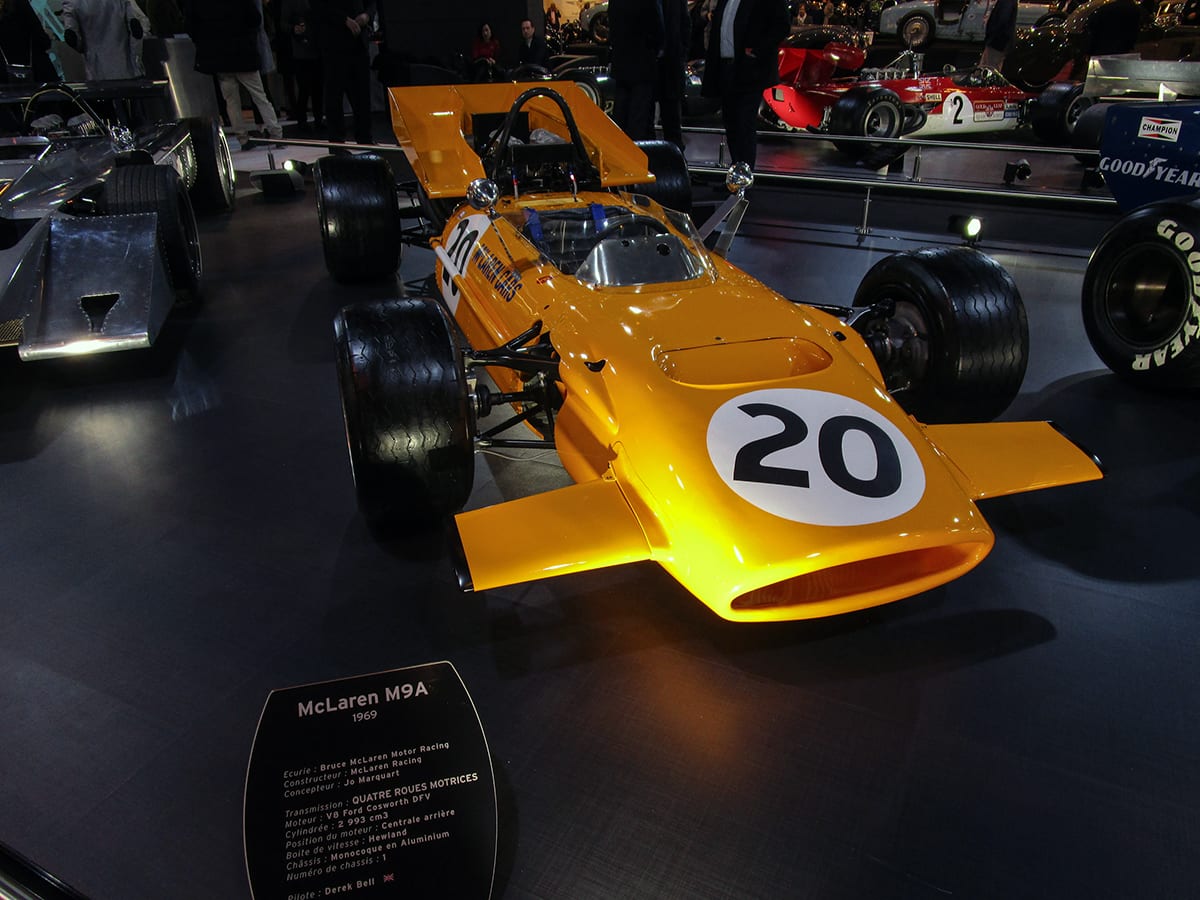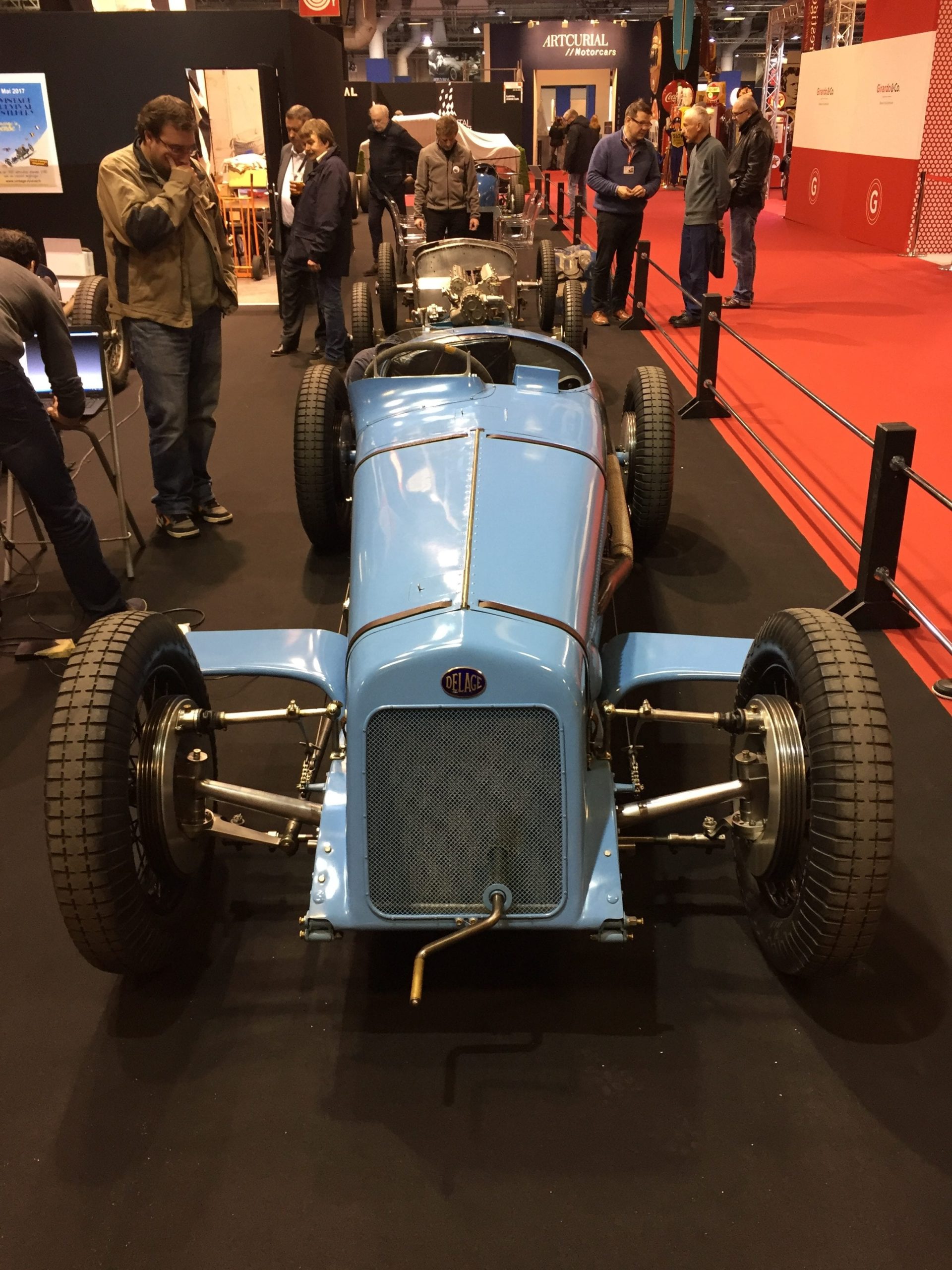Retromobile opens curtain on over a century of cars, Delages take center stage
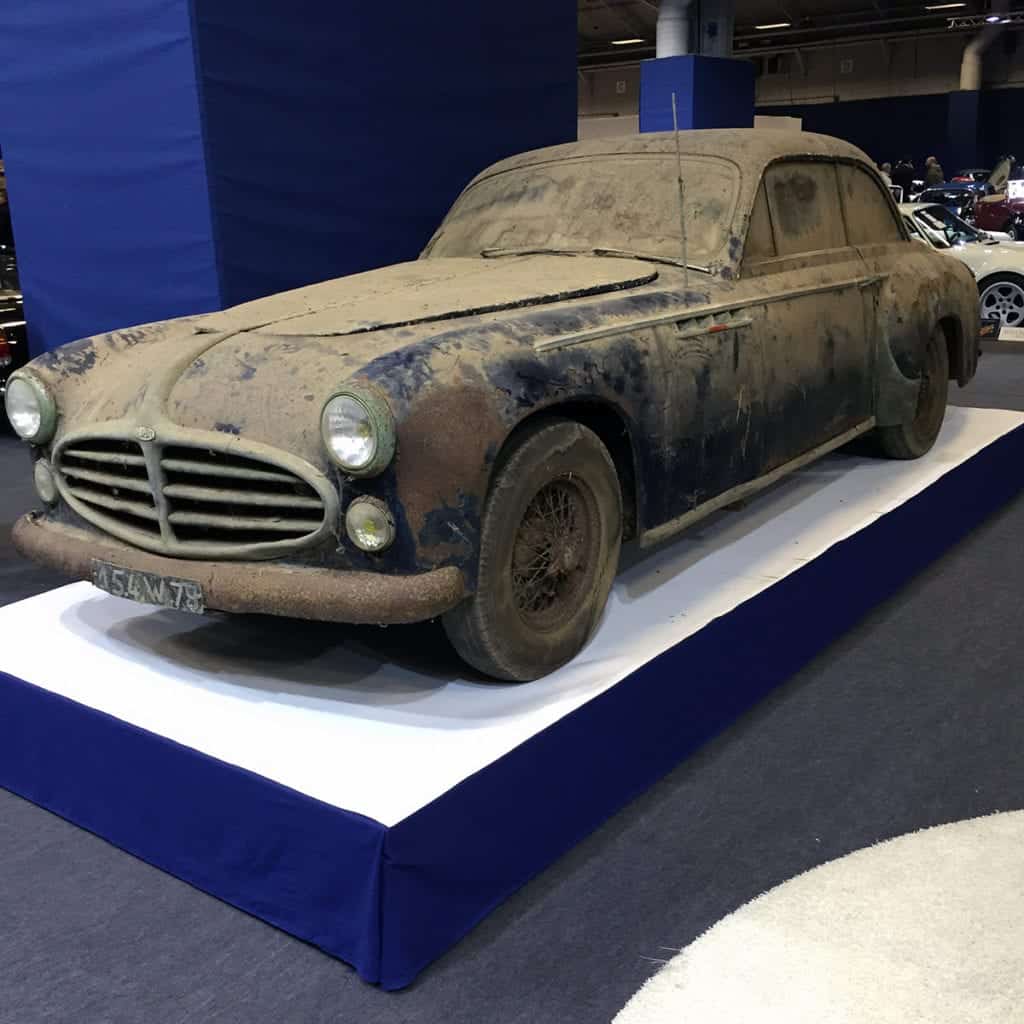
A 1966 Ferrari Dino Berlinetta Speciale expected to see bids up to 8.0 million euros at an auction. An Aston Martin DB5, replete with an eject button for the driver’s seat, a radar screen embedded in the dashboard, and a Browning machine gun that sprayed bullets above the back bumper in the 1966 James Bond classic “Goldfinger”. A free tasting of $100 bottles of wine from the fabled vineyard Chateauneuf-du-Pape.
Welcome to a show like none other.
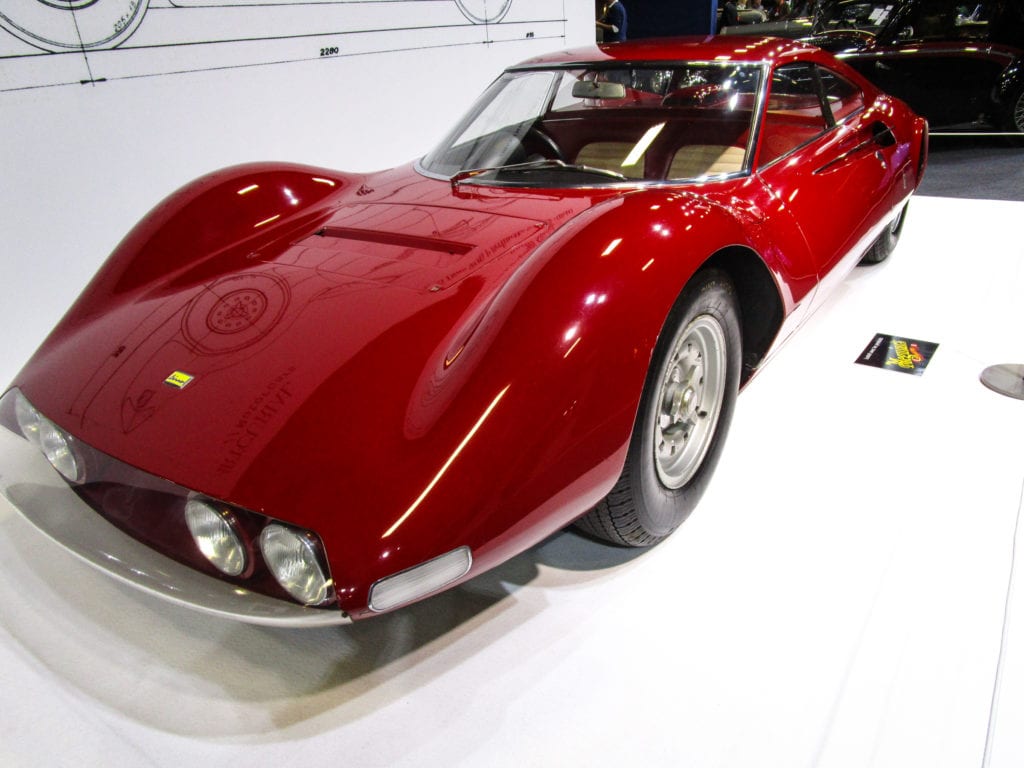
Wine tasting at a car venue makes sense because, after all, this is Paris, France where the 42nd vintage classic car show Retromobile is held this week at the Porte de Versailles February 8 to 12.
Among the show’s must-see attractions are five Grand Prix-winning Delages (only six were ever built). They are on display in a single venue for the first time marking nine decades after Delages burst on the racing scene to dominate Grand Prix racing from 1925 until 1927.
The Delages, shipped from the U.S., UK, and France will also travel to the Brooklands Museum near London, the Autodrome de Montlhery in the Paris suburbs, back to Brooklands, and then to the 1917 Goodwood Festival of Speed.
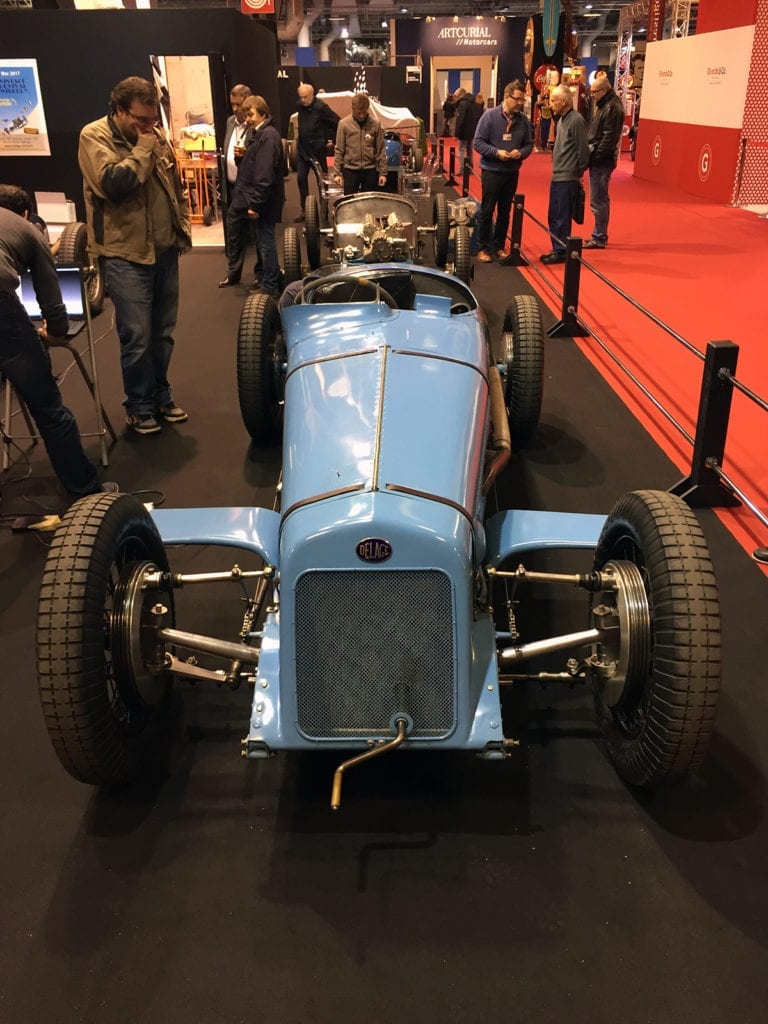
The start of the Delages long trip at Retromobile also reflects a collective effort among many who devoted countless hours and financial resources to bringing the Delages to Paris, which includes Revs Institute’s Delage 15 S 8 with chassis 21642, shipped from Naples, Florida.
The genesis of the project traces back over the course of decades when it was first discussed.
To that point, Francois Melcion, Retromobile’s general director, stressed, “I can’t begin to describe how hard it was for them to bring these cars together from Europe and the U.S. It represents a decades-long job. But I can see why they worked so hard — Americans often tell me Retromobile is the best [vintage] show in the world, so I can understand their dedication.”
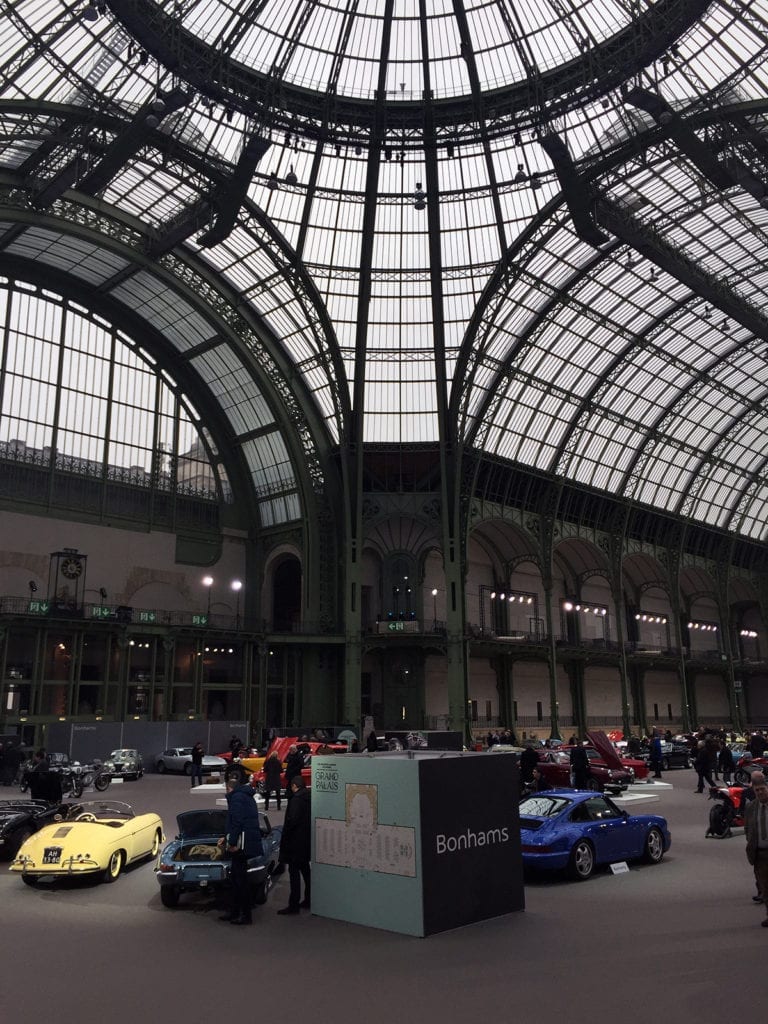
As vintage car shows go, Retromobile is very much part of its larger context as a mecca for classic car enthusiasts where 120,000 attendees are expected to converge this week. Enthusiast car culture in France is also not limited to Peugeot and Citroens that spawned such icons as the DS and the 2CV or European classics such as Jaguars, Bugattis, and Mercedes. American classics such as 1960s-era Camaros, Cadillac DeVilles, or Mustangs also play a role as they too reflect the French’s devotion to vintage cars.
Numerous are the visitors who come to Retromobile, of course, to take part in the buying and selling of vintage cars. Many also pay 18 euros to just revisit up close models they might remember seeing or riding in as a kid. What you can find here runs the gamut. Besides the multi-million-dollar auction for the 1966 Ferrari Dino Berlinetta Speciale, such items as a manual for a ’70 Stingray Corvette or $5 parts for 30-year-old Renault carburetors are on sale.
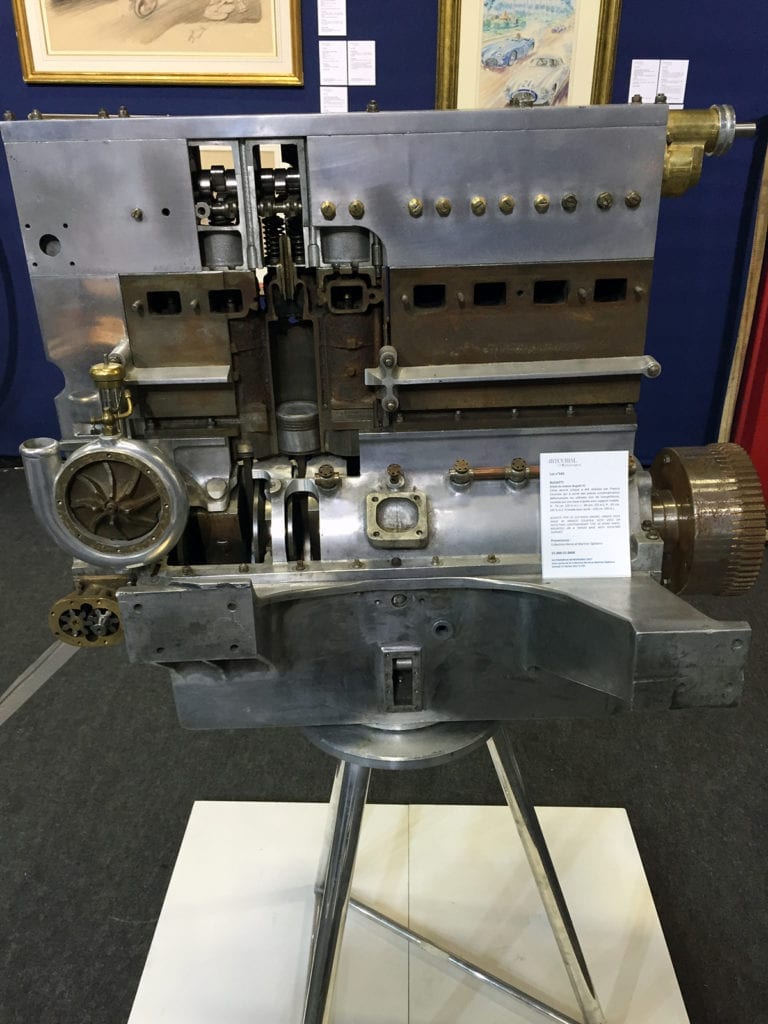
“There is a mix of people who have the money to buy these cars and there are others who do not,” Melcion added. “The thousands of people from all over France and the world who come here really are diverse. The main theme is passion for vintage cars.”
Retromobile, as venue, is a good opportunity to bring your children to show them real-life examples of automotive history.
With that goal in mind, Nicolas Waniowski, an executive from France’s Bouygues Telecom, said. “I wanted to share my passion for cars, such as my first Peugeot 205 GT with my children, and to show them mythical cars. There are several great museums in France, but Retromobile is an occasion to see the different models in one place from around the world.”
It is a tumultuous time in France, both in the automotive industry and politically. Paris shares much of the expected upheaval in transportation with other major urban centers around the world, where all-electric and autonomous cars should have profound changes on transportation. Meanwhile, France is on the cusp of a presidential election a few months away. With such turmoil and uncertainty, one could assume Retromobile might offer a needed respite from today’s problems and serve as a temporary escape valve to a kinder and gentler past.
Retromobile is not about trying to relive the past but serves as a study about how today’s technologies were developed. Olivier Masi, president of the Scarabee d’Or association — whose engineering student members are building a replicate of the Citroen B2 10 HP that was the first motor vehicle to cross the Sahara Desert in 1922 – amplified that point. “Retromobile is really about two things: elegance and technology, which are eternal and are certainly not just part of the past,”
The Delages on display, for example, serve as a first-hand study of advances in engine designs, aerodynamics, and other technologies that would affect racing for decades to come after their development in the 1920s.
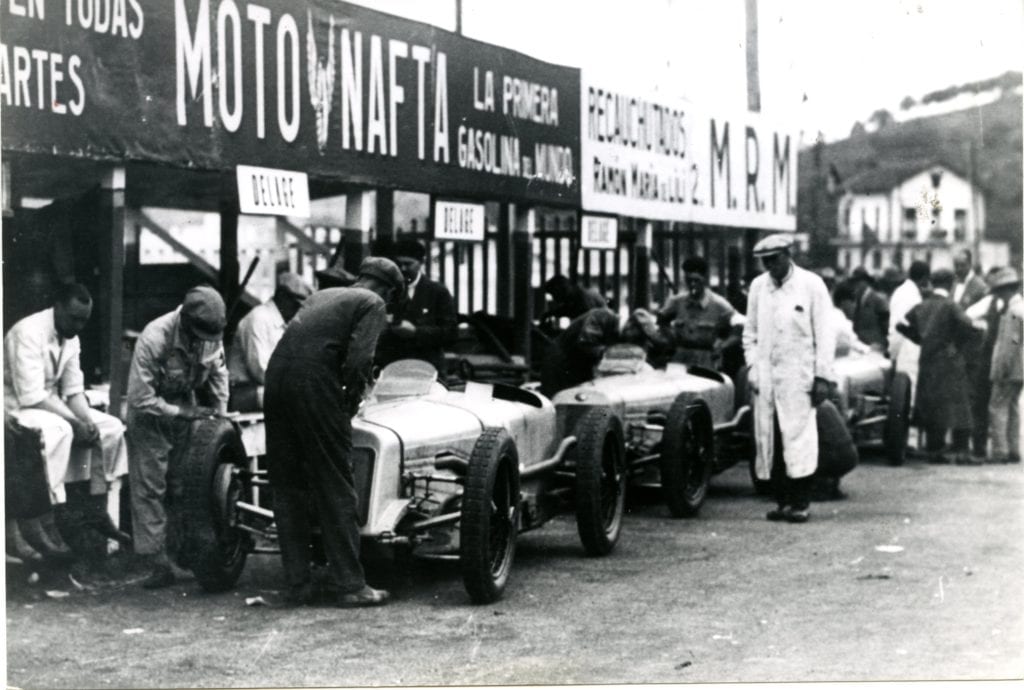
The ahead-of-the-time design feats resulted in a Grand Prix-winning, straight-8 five-speed transmission engine with 170 horsepower. Its chassis’ center of gravity was so low the radiator cap was not higher than the wheel base. Opening the hood reveals an engine block with a nickel-chromium crank and cam with over 200 ball bearings that looks like a jewel-studded clock.
There were issues, including the now famous exhaust that piped in extreme heat into the cockpit that literally singed the pilots’ feat before it was replaced. But that is just par for the course for any untested technology and tales about drivers soaking their feet in footbaths after races is now the stuff of legends,
“Delage reflects what very advanced engineering intelligence can accomplish when up against a brick design wall,” Masi underscored.
The narrative behind Delage founder Louis Delage as a person can also serve as an inspiration for engineers and entrepreneurs today.
“People come to Retromobile to see history, and at the same time, to think about the people who were at the origin of the cars,” said Daniel Cabart, author of “Delage Champion,” which was recently published. “Delage’s father was just the warden of a power factor and his mother did not know how to read or write. He started from a very humble socio-economic background and his cars later dominated the Grand Prix circuit in 1925-27.”
Indeed. And still dominate our imaginations today.
